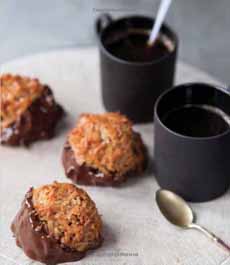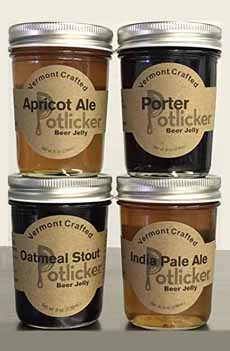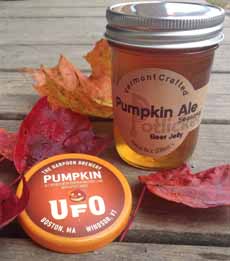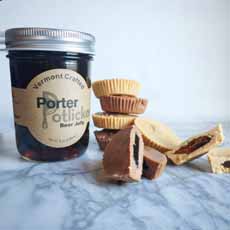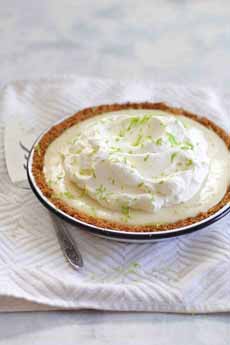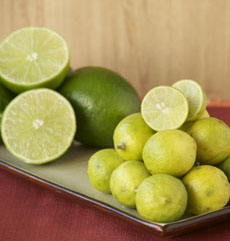
[1] Sautéed broccolini with lemon and garlic (photo courtesy eMeals).

[2] Uncooked broccolini (photo courtesy Bodecology).
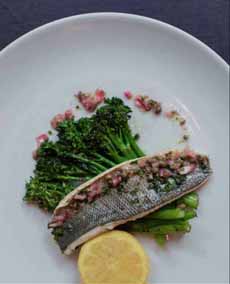
[3] For presentation, set the protein atop the cooked broccolini. Here, roast branzino with caper vinaigrette from Chef David Burke.
|
|
Not into green beer and green bagels?
A healthy green food for a St. Patrick’s Day meal is this Sautéed Lemon-Garlic Broccolini from eMeals, a recipe subscription service with 25 different meal plans for every diet (there’s a 14-day free trial).
Set a piece of your favorite protein on top or to the side: a fish fillet, sliced steak or chicken, shrimp, or another favorite.
RECIPE: LEMON-GARLIC BROCCOLINI
Ingredients
1 tablespoon olive oil
1 pound broccolini, ends trimmed
2 cloves garlic, minced
1/8 teaspoon crushed red pepper
1/4 cup chicken or vegetable broth
1/4 teaspoon grated lemon rind
2 teaspoon lemon juice
1/2 teaspoon salt
1/2 teaspoon pepper
Optional: red chile flakes or minced jalapeño
Preparation
1. HEAT the oil in a large skillet over medium-high heat. Add the broccolini, garlic, and red pepper flakes; sauté for 4 minutes.
2. ADD the broth. Cover, reduce the heat to medium-low, and cook 6 minutes or until tender.
3. STIR in the lemon rind, lemon juice, salt and pepper. Sprinkle on the chile and serve.
BROCCOLINI VS BROCCOLI VS BROCCOLI RABE:
THE DIFFERENCE
Broccolini is not a young growth of broccoli, although it looks like small broccoli florets atop long, slender stems.
Rather, broccolini is a hybrid of broccoli and gai-lan (kai-lan), a Chinese chard, both cultivar groups of Brassica oleracea, the powerful cruciferous vegetable family.
Broccolini is not a young form of either broccoli or broccoli rabe: it is a hybrid.
It can be eaten cooked or raw, and is sweeter than broccoli florets.
Though much more expensive than broccoli, there is little waste. The stems don’t even need to be trimmed.
The History Of Broccolini
In the late 1980s, breeders at Japan’s Sakata Seed company crossed broccoli and gai-lan and named the new vegetable asparation. Sakata partnered with a Mexican grower, and then with Mann Packing in California, to grow asparation. Mann gave it a more consumer-friendly name: broccolini.
|
To add some confusion, broccolini was given different names to appear at retail, including brocolette, brocoletti, and sweet baby broccoli. If you’re facing down these names, just remember: tall, slender stems + few or no leaves = broccolini.
Broccoli rabe, with which broccolini is often confused, has a profusion of leaves at the top.
Here’s how to end the confusion between…
Broccolini, Broccoli & Broccoli Rabe
Broccoli is a member of the Brassica family of cruciferous vegetables, which includes bok choy, broccoli, Brussels sprouts, cauliflower, cabbage, kale, kohlrabi, mustard greens, and turnips, among other veggies. It has thick stalks and large, dense florets. It grows with large outer leaves, which are usually stripped away prior to hitting store shelves. However, they are edible and delicious.
Broccolini, which has long, slender stalks and small, less dense florets, is a hybrid developed in California by crossing conventional broccoli with Chinese kale. Unlike broccoli and broccoli rabe, it does not have leaves.
Broccoli rabe or rapini (pronounced robb and sometimes spelled raab) is popular in Southern Italy, where it is often served with pasta or polenta. It looks like a very leafy broccolini but is actually a member of the turnip genus. It is more bitter than broccoli and broccolini.
HOW TO SERVE BROCCOLINI
Like broccoli and broccoli rabe, broccolini is low in calories: about 35 calories for six stems. It is a good source of calcium, folate, iron, potassium and vitamins A and C (100% DV).
Treat broccolini as you would broccoli, broccoli raab or asparagus:
Crudités
Pasta primavera
Sautéed or steamed with a squeeze of lemon juice (alone or in a medley with asparagus, mushrooms and/or other vegetables)
Stir-fries
If you want a sauce, Asian sauces like soy-ginger-sesame or ponzu, work well, as does a light mustard sauce or vinaigrette.
For a garnish, your favorites work nicely: crumbled bacon, pine nuts, seasoned breadcrumbs, etc.
CHECK OUT WHAT’S HAPPENING ON OUR HOME PAGE, THENIBBLE.COM.
|
|
